The enchanting natural beauty that awaits you at Jatiluwih certainly justifies the long drive. The area is still relatively quiet, and to avoid getting lost, bring a map and familiarise yourself ahead of time with two or three of the towns you will encounter along the route.
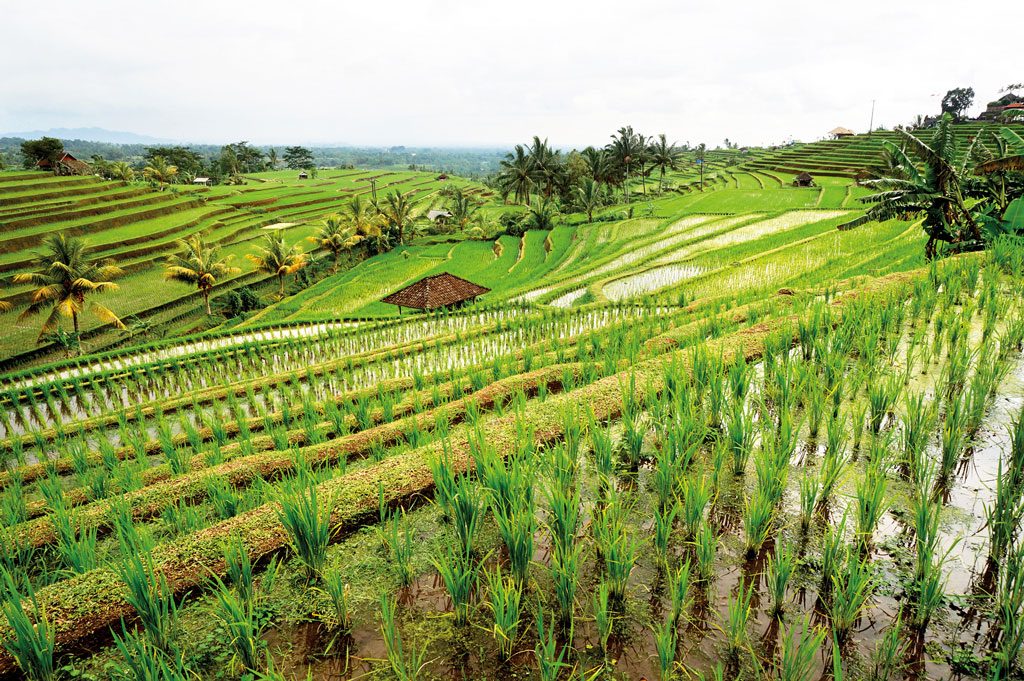
Rice fields such as those in Tabanan regency are common in the landscapes of Bali, where agriculture has been an integral part in the life of the Balinese people for thousands of years. The image of nature and people living together in harmony can be found here.
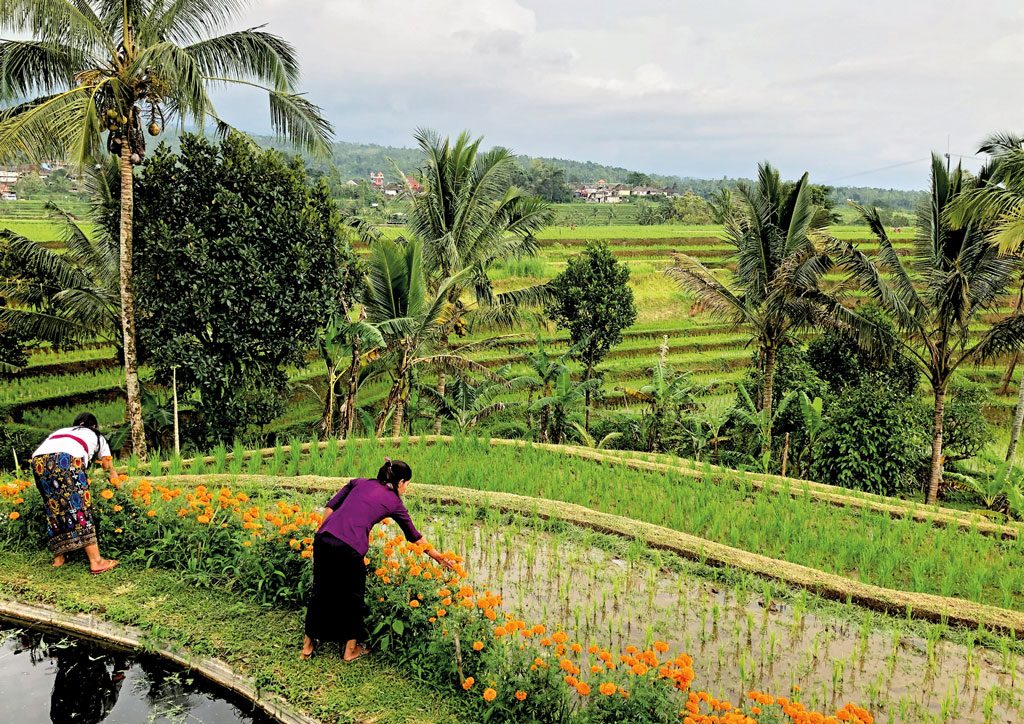
Tabanan in general is somewhere you can feast your eyes on awe-inspiring landscapes. The region’s landscape is the home to the grand sight of terraced rice fields that carpet the ground for as far as the eyes can see, Jatiluwih. Comprising over 600Ha of rice fields that follow the flowing hillside topography of Mount Batukaru range, Jatiluwih sets an exceptional example of Bali’s water management system known as subak, which dates back to the 9th century.
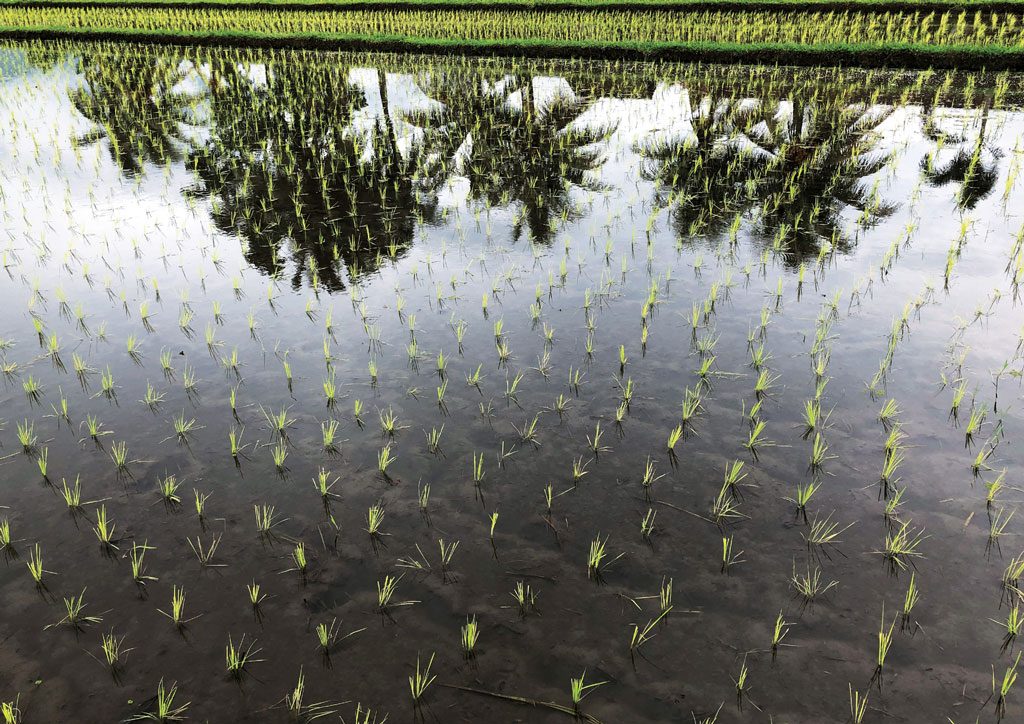
The subak system has farmers sharing and distributing their water to one another; other than its obvious practical uses in farming, the system allows for the farmers to unite in their common need for water and bring a community together. For this reason, Jatiluwih is listed as a UNESCO World Heritage Site, inscribed as a ‘Cultural Landscape’, and the subak system a manifestation of Bali’s Tri Hita Karana philosophy which advocates harmony between nature, humans and God.
Loosely translated to “amazing beauty”, the ridges of Jatiluwih rice fields are one of the magical examples of how talented the Balinese hands are. What is an astounding thought is to realise that this vast area of intricately manicured rice fields are all made by hand. Without a doubt, these enchanting fields, which are arranged in a series of terraces to follow the natural contours of the landscape, offer some of the most stunning views on the entire island.
Beautiful when the sun reflects in the water of the fields and glowing with yellow ears when the harvest is ripe, the rice terraces of Jatiluwih are a feast for the eyes – and definitely a photographer’s dream. The area’s cool pockets of air bring a refreshing change from the oppressive tropical heat of southern Bali as well.
The agricultural community in Jatiluwih has more or less remained untouched by the impact of tourism. Instead, many villagers seem to maintain a simplistic lifestyle that concentrates on the continual cycle of harvesting their crops and their strong faith in the Hindu religion. There are frequent ceremonial rituals prepared by each family or farmers to express their gratitude to the gods for the provision of earth, water, and all of nature’s components that allow mankind to exist.
You can find a number of restaurants along the small road overlooking the rice terraces. From here you can enjoy the lovely view of Jatiluwih while having a meal (international and local cuisines), or a cup of coffee, letting time slip by. Different from its Tegallalang counterpart, Jatiluwih allows the visitors to really enjoy the largest and most picturesque expanse of paddies on the island undisturbed, for tourist traffic jams are not a common sight here.

In addition to the restaurants, several lookout points are provided so you can look down onto the terraced fields, allowing you to capture that perfect Kodak moment. But if you can go down, why just look down?
Jatiluwih’s rolling hills and meandering terraces are explorable, for pathways have been carved out of the soil for easy access. Below you’ll find several spots to take selfies with the rice fields as the backdrop. Taking your time while having a pleasant stroll around the terraces should be the highlight of your visit here.
The best time to visit Jatiluwih is in the morning, when the gentle morning breeze brushes through the hair of the village farmers as they are absorbed in their work amidst the brilliant greenery of the surrounding rice fields. The opportunity to wander through the rice fields and watch the birds as they attempt to steal rice grains from young stalks is one of life’s simple pleasures.
Jatiluwih is located in the north of Tabanan Regency, some 13km north of the town centre.
EXPLORE TABANAN
In addition to Jatiluwih, Tabanan is also home to Pupuan, a beautifully landscaped area fit for those longing for tranquility and relaxation, and if you would like to experience Bali in its own special and traditional nature. Entering the area, nestled some 600m above sea level, you’ll be greeted by a landscape that is spectacular and truly exotic. And just like Jatiluwih, it’s also the home to the grand sight of terraced rice fields that carpet the ground for as far as the eyes can see.
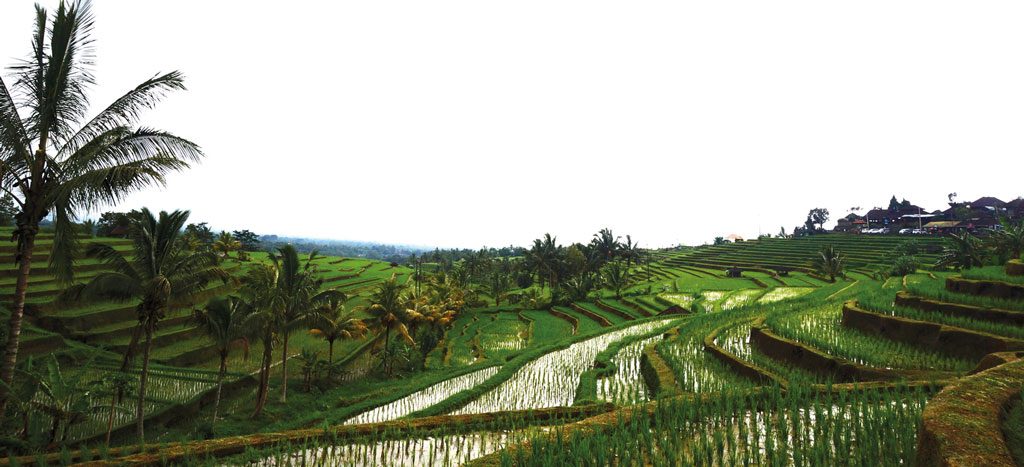
With that being said, spectacular rice fields are not all that Pupuan has to offer. Ascending inland through the smooth, winding road of Pupuan will also lead you to Vihara Dharma Giri, a Buddhist temple that has flown under the radar of many visitors to Bali. Home to a giant statue of sleeping Buddha, Vihara Dharma Giri is a tranquil worshipping site frequented mostly by some 100 Buddhist families that reside in the town of Pupuan.
And if you really take your time to explore properly, you’ll be done just in time before sunset; this allows you to experience the nightlife in downtown Tabanan. The busy town of Tabanan is a melting pot, with migrants from Java establishing a community here. And the blending of the cultures is very obvious especially at night time.
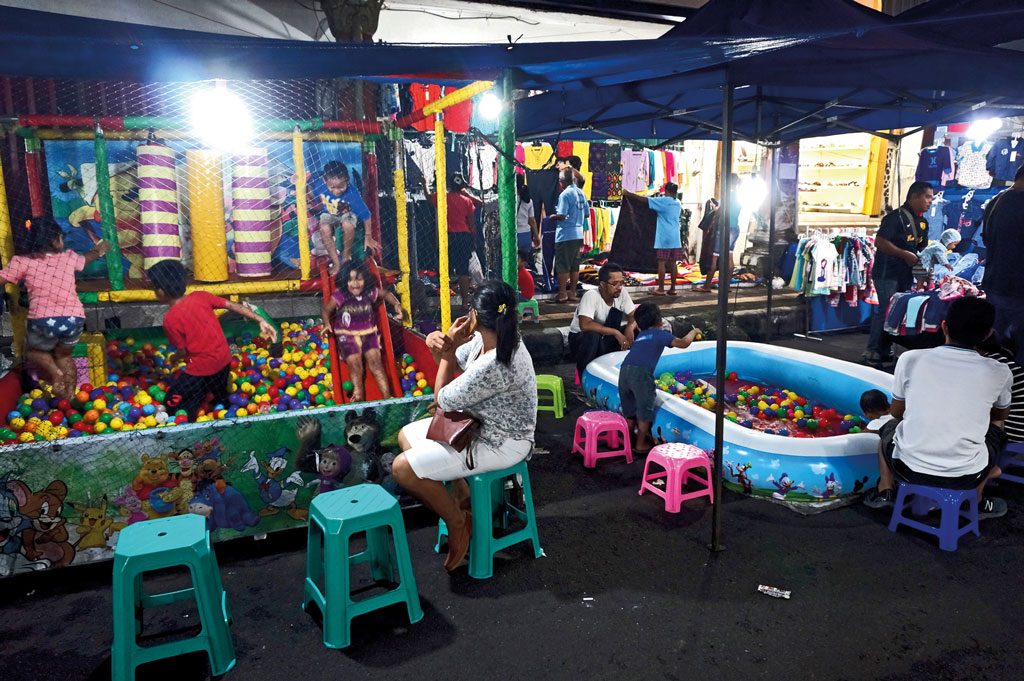
Night markets here are huge attractions for the locals. The multicultural Tabanan is also apparent at these markets such as Pasar Senggol Tabanan on Gajah Mada Street. Most of the food sellers at the night market, if not all, are muslim migrants from Java, offering a plethora of dishes typical to their Java hometowns such as Bakso Solo meatballs and Sate Madura chicken and goat satays. There’s also a whole host of other vendors selling lots of other goods at Pasar Senggol Tabanan. You can find shoes and sandals, t-shirts and shorts, electronics, homewares, women’s accessories, and even gold fish and mini aquariums. Children, too, find this night spot amusing, for they can play on the slide with crush-proof plastic balls on the bottom, or fish the baby catfish (take home whatever you can fish) – in addition to the toy vendors, of course.










